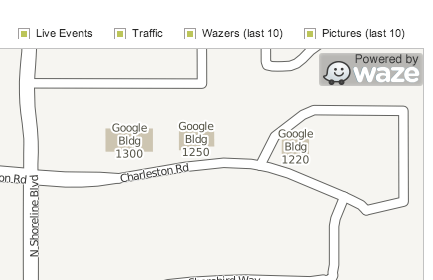
It’s not every VC that publishes annual stats on things like deal-flow, average size of investment, average founder salary, number of exits and startups dead-pooled. But openness — within no doubt carefully crafted limits — is part of London-based Passion Capital‘s brand after it set the bar with its inaugural report last year. And while “openness” is probably the headline takeaway again with this year’s report, it does provide some interesting insight into the workings of an early-stage VC in Europe and what, if anything, has changed for the firm over the last 12 months.
To set some context and give you an idea of its size and how active Passion Capital is, let’s begin by drilling into the first two year’s numbers. Spanning April 2011 to June 2013, the venture capital firm founded by Stefan Glaenzer, Eileen Burbidge and Robert Dighero, and backed by a mixture of UK government funding and private investment, has invested in 34 portfolio companies, two of which have exited and three wound down.
The second-screen football betting app Picklive was sold to Sports Millions for an undisclosed amount, and academic research platform Mendeley was acquired by publisher Elsevier for an amount that TechCrunch pegged between $69-100 million.
The three startups shuttered were Twitter real-time chat service Bonfire, travel site Tripbirds, and wine portfolio app Vinetrade.
Digging deeper, noteworthy is that Passion has only added 13 new startups to its investment portfolio this year — OpenSignal, Memoto, Birdback, ShowMyHomework, CarThrottle, Thread, Future Ad Labs, Hasty, Toothpick, Duego, laZook, and Tray.io — though this doesn’t mean it has been any less active in terms of number of investments, but instead reflects that the fund is maturing when you factor in follow-on and bridge funding as well as Passion’s participation in 3 Series A rounds. In fact, in terms of total transactions (investments, follow-ons, exits, bridges, etc), 30 were made in year two compared to 31 in year one, so not much change there.
Passion has made a total of £5,695,000 in Seed investments, which in turn has gone on to attract a further £35,896,000 from more than 25 different VC funds, though this includes Passion’s own follow-on funding. Looking at the first year’s cohort only, 11 out of a possible 21 have gone on to raise follow-on financing at increased valuations, it says, while 6 are still operating from their seed round financing, and 2 of those are said to be profitable.
That’s perhaps telling, suggesting that Passion got its runway trajectory on the money, but I suspect the real story for many of the startups in its portfolio won’t come until year three. It is still early days after all — can we say Series A crunch?
Furthermore, in year two, its average seed round investment size was £183,717. That’s slightly down from £189,936 in year one. Meanwhile, the average equity stake its taken at the Seed stage is 15%.
In addition, Passion has bundled some interesting operational data mainly related to the way the VC firm attracts deal-flow, but also the average salary of the founders of its portfolio companies (£36,149 per annum), some of which I’ve included below.
Deal flow:
Year 2: 1,932 (up 26% from Year 1 number of 1,532)
533 from referrals (up 22% from Year 1)
779 from the website (up 19% from Year 1)
620 from events (up 40% from Year 1)
Sources of the investments made:Passion says that the average number of days between a prospective investment first meeting one of its 3 partners to a term sheet/investment offer is 6.41 business days — early-stage VCs are won’t to boast the speed at which they make any offer. It doesn’t say, however, how long it takes to get that first meeting.
9 from referrals from our existing Passion founders
7 from within our network (founders were already known to us)
6 from other referrals (not from our founders directly)
3 we proactively sought out (after tracking for some time)
2 from our open office hours
1 from a team which was renting desks at White Bear Yard
It’s also — rightfully — highlighting the fact that it hasn’t charged any of its portfolio companies for legal expenses, closing fees, directors fees, or monitoring fees etc., noting in particular that it’s always paid for its own legal counsel, with little or no fuss (unlike others).
Of note, Passion says it doesn’t employ a PR firm to act on its behalf, which says something about the PR industry considering they do alright on the publicity front. Actually, Passion does more than alright and other European VCs could probably learn a thing or two from their openness, in every sense of the word.
And in a final boast, the VC firm says that the number of founder CEOs it’s replaced with “someone we’ve brought in” has been zero. That’s likely great news for the starry-eyed entrepreneurs it’s backed. However, like the difficult third album, Passion is now into the difficult year three for some of its portfolio companies, so let’s hope it’s not a case of famous last words.
All in all, though, good stuff.
Keep the openness comin’ — we look forward to next year’s update.
(For more data, see Passion Capital’s own blog post, which includes a rather nice infographic if you’re into those sort of things.)
Source : Techcrunch





 Alors que l’Administration Fédérale de l’Aviation
américaine planche sur une législation pour réguler les drones, un petit
écosystème de startups dédié à ces engins volants émerge discrètement,
et attire des gros sous.
Alors que l’Administration Fédérale de l’Aviation
américaine planche sur une législation pour réguler les drones, un petit
écosystème de startups dédié à ces engins volants émerge discrètement,
et attire des gros sous. 






